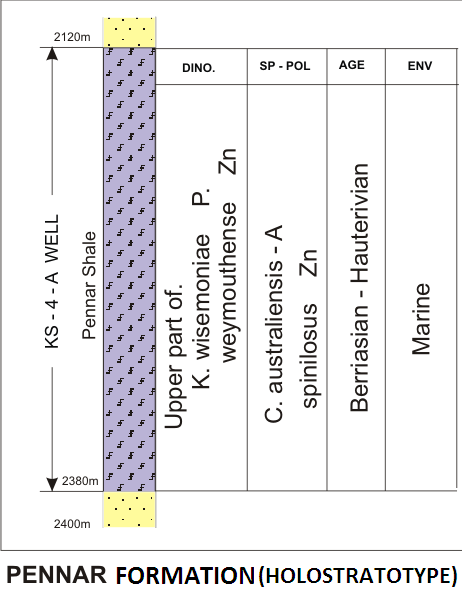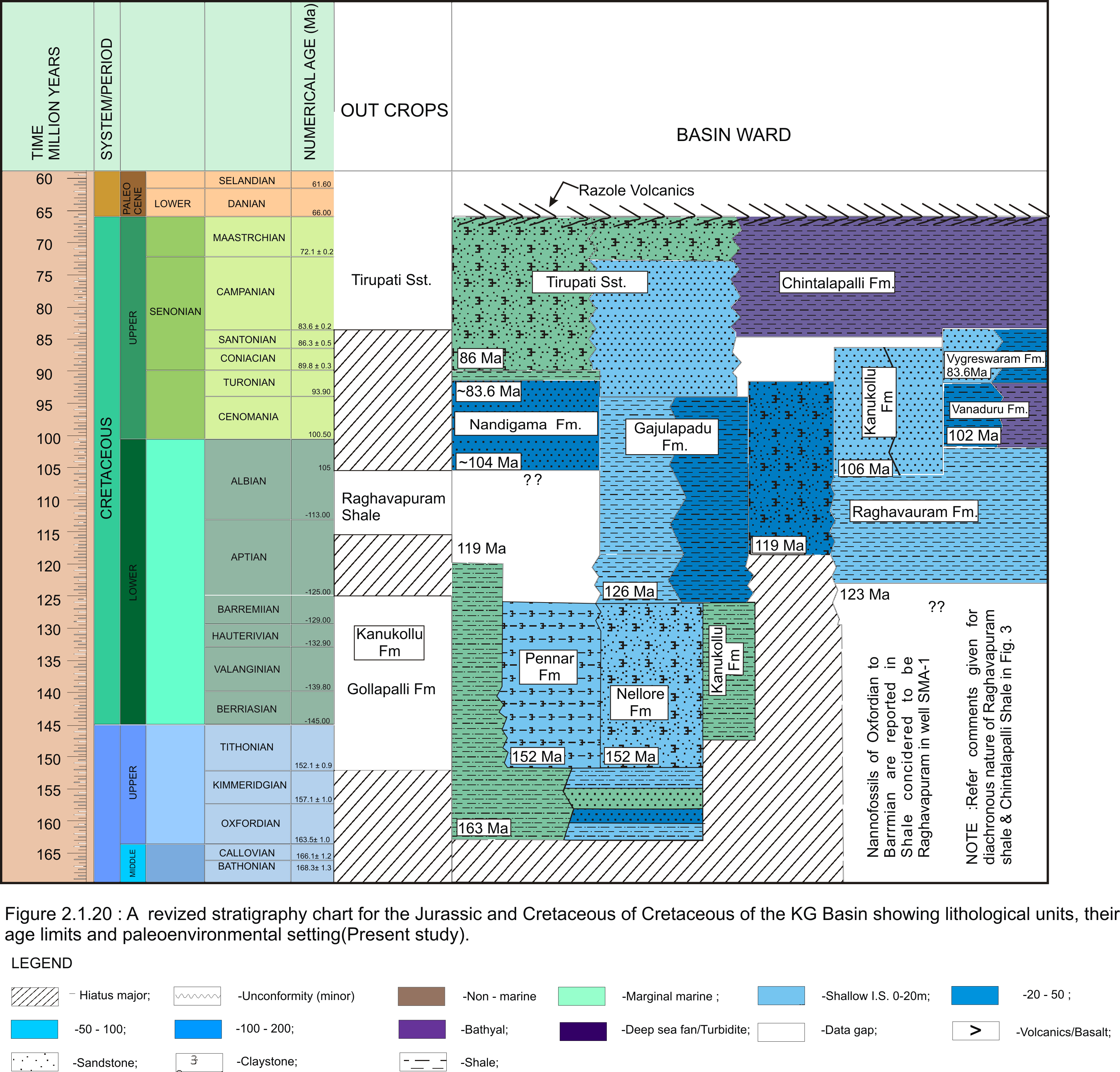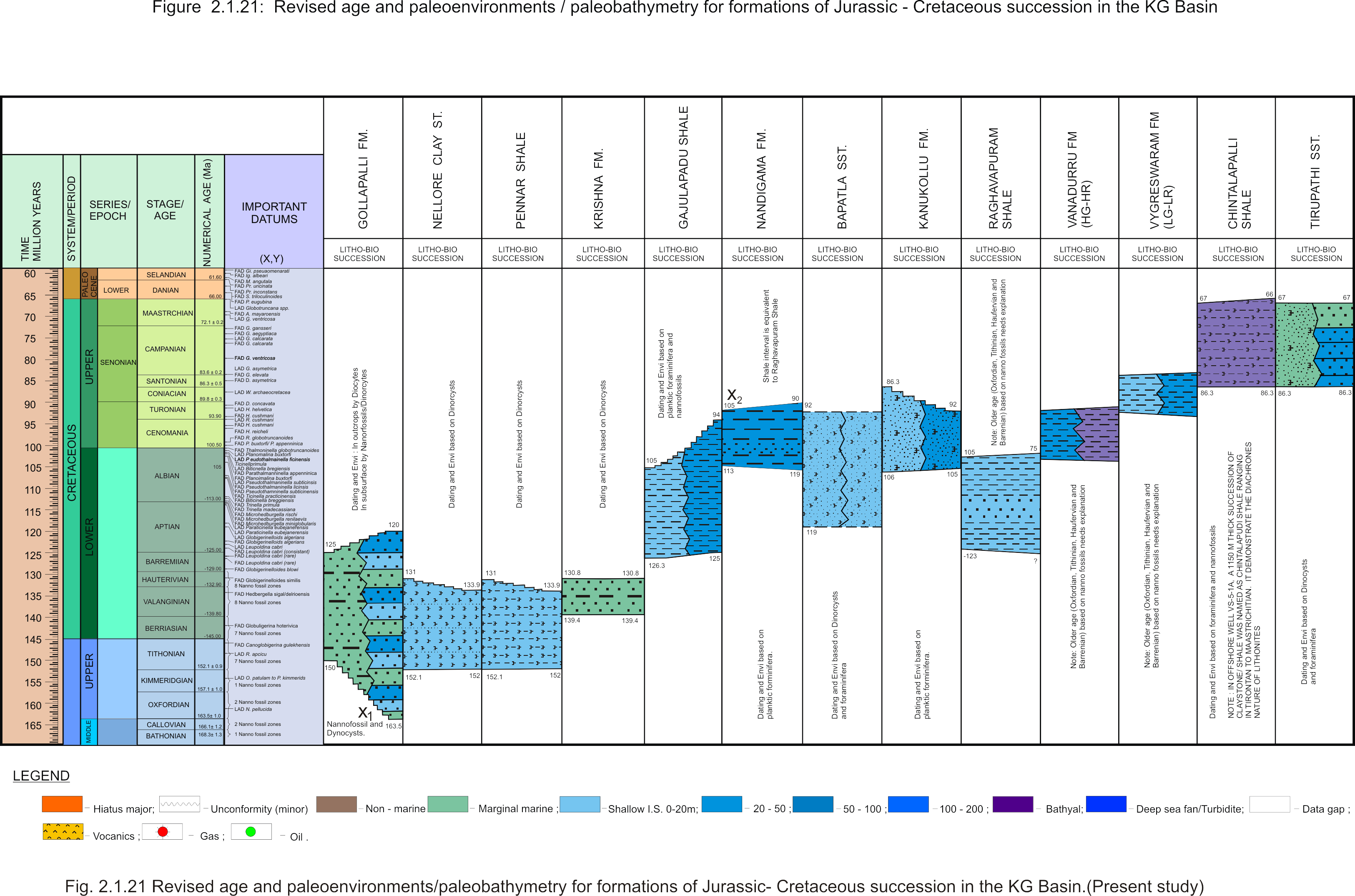Pennar Fm
Type Locality and Naming
BASINAL: The type section is located at exploratory well KS-D-A (depth interval: 2120-2380m), in the Pennar subbasin. The hypostratotype is in the well KS-C-A (depth interval: 2295-2590 m). It was named after the Pennar river by ONGC team steered by Venkatarengan et al. (1993) and issued as Document-VII by KDMIPE, ONGC, Dehradun (1993). [Original Publication: Venkatarengan, R., Rao, G.N., Prabhakar, K.N., Singh, D.N., Awasthi, A.K., Reddy, P.K. and Palakshi, K. (1993) Lithostratigraphy of Petroliferous Basins, Document VIII, Krishna-Godavari Basin, KDMIPE, ONGC Publication, pp.1-29.]. Reference well: Well KS-3-A, Interval 2295-2590 m and thickness 295m.
Synonyms: Pennar Shale
Lithology and Thickness
Sandy claystone. It mainly consists of shale with minor sandstone with palynofossils. Its thickness varies from 260-295 m.
[Figure: Lithology, spore-pollen and dinoflagellate datums, age and environment of the holostratotype of the Pennar Formation in the Well KS-4-A (after Bijai Prasad,1999)]
[Figure: A revised stratigraphy chart for the Jurassic and Cretaceous of the KG Basin showing lithological units, their age limits and paleoenvironmental setting (present study) in Raju et al., 2021, ONGC Bulletin, Special Issue, Vol. 56, No. 2]
Relationships and Distribution
Lower contact
Conformable with the Bapatla Fm.
Upper contact
Conformable with the Krishna Fm.
Regional extent
Present in Pennar graben.
GeoJSON
Fossils
Palynofossils.
Age
Depositional setting
Fluvial.
[Figure: Revised age and paleoenvironments/paleobathymetry of formations of Jurassic-Cretaceous succession in KG Basin in Raju et al., 2021, ONGC Bulletin, Special Issue, Vol. 56, No. 2]
Additional Information
The palynofloral assemblage of Pennar Formation is quite identical to those of the Nellore and Baptala formations.


